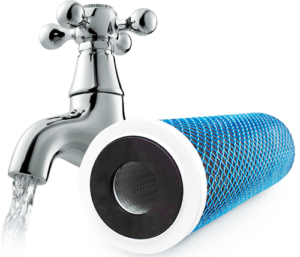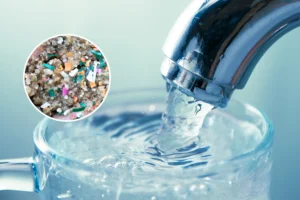Understanding Tap Water in Ohio – Safety, Testing, and Treatment
Water is essential for life, but is the tap water in Ohio safe to drink? While Ohio’s public water systems meet federal and state regulations, contamination risks still exist due to aging infrastructure, industrial pollutants, and natural water quality variations.
Whether you use municipal tap water or private well water, regular water testing in Ohio is crucial to ensure your water is clean, safe, and free from harmful contaminants.
Is Tap Water in Ohio Safe?
Municipal Water Safety
Most public water supplies in Ohio meet the EPA’s Safe Drinking Water Act (SDWA) standards. However, contaminants like lead, chlorine byproducts, bacteria, and PFAS (forever chemicals) can sometimes be present, especially in older cities with outdated plumbing systems.
Private Well Water Risks
If you rely on well water, your supply isn’t regulated by public health authorities, making well water testing in Ohio essential. Potential contaminants include nitrates, bacteria, iron, arsenic, and hard water minerals.

How to Test Tap Water in Ohio
We provide comprehensive water testing services to ensure your home’s tap water is safe. Our process includes:
1. Water Sampling
We collect water from your taps and/or well using sterile techniques to prevent contamination.
2. Laboratory Analysis
We test your water for:
- Bacteria (E. coli, coliform)
- Heavy metals (lead, arsenic, iron)
- Nitrates & pesticides
- pH balance and hardness
- PFAS chemicals
- Chlorine and disinfection byproducts
3. Custom Treatment Recommendations
If we detect contaminants, we provide personalized solutions such as:
-
Reverse Osmosis Water Filtration Systems
-
Water treatment system with lifetime warranty
-
Whole House Water Filters
-
UV Disinfection Systems
Common Contaminants in Tap Water in Ohio
| Contaminant | Source | Health Risks |
|---|---|---|
| Lead | Old pipes & plumbing | Neurological damage, developmental delays |
| Chlorine & DBPs | Water disinfection | Increased cancer risk, bad taste & odor |
| Nitrates | Agricultural runoff | Risk to infants & pregnant women |
| Bacteria & Viruses | Wells, water main breaks | Stomach issues, infections |
| PFAS (Forever Chemicals) | Industrial pollution | Cancer risk, immune system issues |
Even if your water appears clear and tastes fine, it could still contain hidden contaminants. That’s why routine tap water testing in Ohio is vital for every home.
Signs You Need Tap Water Testing in Ohio
- Bad taste or odor in your water
- Cloudy or discolored water
- White residue or buildup on faucets
- Frequent plumbing issues
- Health concerns such as stomach problems
We offer tap water testing in Painesville, Mentor, Concord, Perry, Fairport Harbor, Kirtland Hills, Kirtland, Chardon, Willoughby Hills, Willoughby, Eastlake, Willowick, Wickliffe, Madison, and surrounding areas.
The Benefits of Clean Tap Water
Home Benefits
-
Protects appliances from hard water buildup
-
Extends the life of pipes & fixtures
-
Reduces need for bottled water, saving money & plastic waste
Health Benefits
-
Lowers exposure to harmful chemicals & bacteria
-
Supports better hydration & digestion
-
Reduces risks of neurological & immune system issues
Cost Benefits
-
Saves money on bottled water & plumbing repairs
-
Increases property value with a water filtration system
Contact Us for a Free Tap Water Test!
FAQs – Tap Water in Ohio
1. Which areas do you cover for tap water testing?
We offer testing in Painesville, Mentor, Concord, Perry, Fairport Harbor, Kirtland Hills, Kirtland, Chardon, Willoughby Hills, Willoughby, Eastlake, Willowick, Wickliffe, and Madison.
2. Is Ohio’s tap water safe to drink?
Municipal tap water is treated, but contaminants like lead, chlorine, and PFAS chemicals may still be present. Private wells require regular testing.
3. How do I know if my tap water is contaminated?
Look for signs like bad taste, cloudy water, residue buildup, frequent plumbing issues, or health concerns. Testing is the only way to be sure.
4. Can I test my own tap water?
Home test kits exist, but professional lab water testing provides the most accurate results.
5. What contaminants should I be concerned about?
Common contaminants in tap water in Ohio include lead, chlorine, bacteria, PFAS, nitrates, and heavy metals.
6. What’s the best way to remove contaminants?
A Reverse Osmosis Water Filtration System removes most harmful pollutants, ensuring clean, safe drinking water.
7. How often should I test my tap water?
-
Municipal tap water: Once a year
-
Well water: Every 6 months
8. What’s the cost of a tap water test in Ohio?
We offer free basic water testing for homeowners.
9. What filtration systems do you recommend?
We recommend reverse osmosis systems, whole house water filters, and water softeners, depending on test results.
10. How can I schedule a free water test?
Contact us here 👉 https://ohwatertesting.com/contact-ohio-water-testing/





